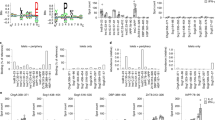Abstract
Beta cell destruction in autoimmune diabetes is accompanied by the presence of autoantibodies and autoreactive T cells against beta cell antigens. Autoantibodies to insulin are predictive of future diabetes in man and in the non-obese diabetic mouse model. Furthermore, the detection of peripheral autoreactive CD8+ T cells in this mouse model is indicative of beta cell killing and correlates with the development of diabetes. We describe two protocols that are helpful for the detection of beta-cell autoimmunity in mice. The first protocol describes the detection of insulin-specific autoantibodies using a radio-binding assay. The other is a general CD8+ T cell ELISpot protocol for the detection of peptide-specific responses of CD8+ T cells from secondary lymphoid organs or pancreatic islets.
Access this chapter
Tax calculation will be finalised at checkout
Purchases are for personal use only
Similar content being viewed by others
References
Atkinson MA, Eisenbarth GS (2001) Type 1 diabetes: new perspectives on disease pathogenesis and treatment. Lancet 358:221–229
Ziegler AG, Hummel M, Schenker M et al (1999) Autoantibody appearance and risk for development of childhood diabetes in offspring of parents with type 1 diabetes: the 2-year analysis of the German BABYDIAB Study. Diabetes 48:460–468
Kimpimaki T, Kulmala P, Savola K et al (2002) Natural history of beta-cell autoimmunity in young children with increased genetic susceptibility to type 1 diabetes recruited from the general population. J Clin Endocrinol Metab 87:4572–4579
Yu L, Robles DT, Abiru N et al (2000) Early expression of antiinsulin autoantibodies of humans and the NOD mouse: evidence for early determination of subsequent diabetes. Proc Natl Acad Sci U S A 97:1701–1706
Tian J, Chau C, Kaufman DL (1998) Insulin selectively primes Th2 responses and induces regulatory tolerance to insulin in pre-diabetic mice. Diabetologia 41:237–240
Muir A, Peck A, Clare-Salzler M et al (1995) Insulin immunization of nonobese diabetic mice induces a protective insulitis characterized by diminished intraislet interferon-gamma transcription. J Clin Invest 95:628–634
Bonifacio E, Atkinson M, Eisenbarth G et al (2001) International Workshop on Lessons From Animal Models for Human Type 1 Diabetes: identification of insulin but not glutamic acid decarboxylase or IA-2 as specific autoantigens of humoral autoimmunity in nonobese diabetic mice. Diabetes 50:2451–2458
Yu L, Eisenbarth G, Bonifacio E et al (2003) The second murine autoantibody workshop: remarkable interlaboratory concordance for radiobinding assays to identify insulin autoantibodies in nonobese diabetic mice. Ann N Y Acad Sci 1005:1–12
Bingley PJ, Bonifacio E, Mueller PW (2003) Diabetes Antibody Standardization Program: first assay proficiency evaluation. Diabetes 52:1128–1136
Schlosser M, Mueller PW, Torn C et al (2010) Diabetes Antibody Standardization Program: evaluation of assays for insulin autoantibodies. Diabetologia 53:2611–2620
Tsai S, Shameli A, Santamaria P (2008) CD8+ T cells in type 1 diabetes. Adv Immunol 100:79–124
Skowera A, Ellis RJ, Varela-Calvino R et al (2008) CTLs are targeted to kill b-cells in patients with type 1 diabetes through recognition of a glucose-regulated preproinsulin epitope. J Clin Invest 118:3390–3402
Anderson B, Park BJ, Verdaguer J et al (1999) Prevalent CD8(+) T cell response against one peptide/MHC complex in autoimmune diabetes. Proc Natl Acad Sci U S A 96:9311–9316
Brunner KT, Mauel J, Cerottini JC et al (1968) Quantitative assay of the lytic action of immune lymphoid cells on 51-Cr-labelled allogeneic target cells in vitro; inhibition by isoantibody and by drugs. Immunology 14:181–196
Prussin C, Metcalfe DD (1995) Detection of intracytoplasmic cytokine using flow cytometry and directly conjugated anti-cytokine antibodies. J Immunol Methods 188:117–128
Brosi H, Reiser M, Rajasalu T et al (2009) Processing in the endoplasmic reticulum generates an epitope on the insulin A chain that stimulates diabetogenic CD8 T cell responses. J Immunol 183:7187–7195
Trudeau JD, Kelly-Smith C, Verchere CB et al (2003) Prediction of spontaneous autoimmune diabetes in NOD mice by quantification of autoreactive T cells in peripheral blood. J Clin Invest 111:217–223
Williams AJ, Bingley PJ, Bonifacio E, Palmer JP, Gale EA (1997) A novel micro-assay for insulin autoantibodies. J Autoimmun 10:473–478
Naserke HE, Dozio N, Ziegler AG et al (1998) Comparison of a novel micro-assay for insulin autoantibodies with the conventional radiobinding assay. Diabetologia 41:681–683
Koczwara K, Schenker M, Schmid S et al (2003) Characterization of antibody responses to endogenous and exogenous antigen in the nonobese diabetic mouse. Clin Immunol 106:155–162
Jarchum I, Takaki T, DiLorenzo TP (2008) Efficient culture of CD8(+) T cells from the islets of NOD mice and their use for the study of autoreactive specificities. J Immunol Methods 339:66–73
Author information
Authors and Affiliations
Corresponding author
Editor information
Editors and Affiliations
Rights and permissions
Copyright information
© 2012 Springer Science+Business Media, LLC
About this protocol
Cite this protocol
Fuchs, Y.F., Adler, K., Bonifacio, E. (2012). Beta-Cell Autoimmunity. In: Joost, HG., Al-Hasani, H., Schürmann, A. (eds) Animal Models in Diabetes Research. Methods in Molecular Biology, vol 933. Humana Press, Totowa, NJ. https://doi.org/10.1007/978-1-62703-068-7_17
Download citation
DOI: https://doi.org/10.1007/978-1-62703-068-7_17
Published:
Publisher Name: Humana Press, Totowa, NJ
Print ISBN: 978-1-62703-067-0
Online ISBN: 978-1-62703-068-7
eBook Packages: Springer Protocols




